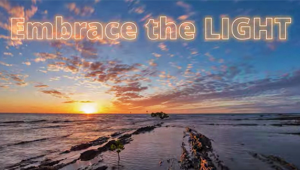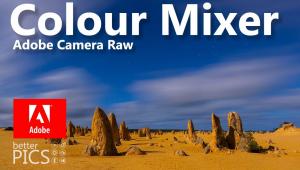Artificial Light: Natural Results
You might think that with digital offering a unique ISO setting for every frame, and with the coordination of high ISO and sophisticated noise reduction software, that there would be less and less demand for and use of auxiliary lighting. Yet, use of flash, from built-in to ringlight to large portable battery packs and softbox location gear, has risen, and with it the potential for more finite control of light. Because that’s what flash, or strobe or speedlight, or whatever you might call it, and related accessories that help modify that light are all about—controlling light when you need to and adding a taste of light when desired.
The artful use of auxiliary light takes some practice and understanding of how it differs from “natural” light. The controlled explosion of strobe comes with subtle shifts in color temperature, exposure considerations that natural light does not require, and a certain skill set in placing the light in relation to the subject. There’s nothing quite as brutal as the point source of light from a direct, unmodified flash onto the subject. It not only brings out every flaw but also lacks subtlety and looks as unnatural as you can get. Yet, that’s the flash many of us use most often—the built-in flash on the camera or the unmodified hot shoe-mount speedlight. It is in shaping and softening the light, and in delivering just enough light to illuminate without overpowering subjects, that the craft of using auxiliary lighting comes into play.
There has never been a lack of light-modifying accessories that attach to and over the flash, or that allow you to mount your flash within a softening or light-directing box. There are also new options in LED lights, intelligent TTL multi-flash setups, and certainly in wireless that have made working with flash easier and more pleasurable than ever before. The transmitter/receiver strobe setup has changed the way photographers use flash, allowing for more portable shooting and more camera movement freedom. And with more portable full-fledged setups, with powerful batteries and monoblocs combining to offer what full-fledged AC packs supplied before, there’s even less need for wires and cumbersome mains attachments for on-location interior and even exterior shooting.
While all these advances have made strobe shooting easier and more portable, there remains the need for each and every photographer to learn all they can about lighting, and to use the gear to its fullest whether the subject is portraits, weddings, still life, or architectural interiors and even sports. That requires practice, trial and error, and, hopefully, some information you glean from the pages of Shutterbug in this issue, dedicated to lighting tools and techniques, and throughout the year. In addition, I encourage you to check out our Lighting Techniques and Equipment archive at www.shutterbug.com, where we have years of articles on the art and craft of lighting. Indeed, the lighting gear reviews usually have a good many tips on the best practices for all sorts of main, auxiliary, and accessory lighting gear.
A sampling of articles there include a how-to on setting up a studio in a small space; lighting a tabletop setup for “Internet” photography; on-camera light modifiers; a roundup of portable strobes; and current reviews on various lights and lighting kits. Just go to the homepage and check out Lighting Techniques and Lighting Equipment on the Site Links left-side nav bar. In addition, if there’s a particular article or type of gear you seek but can’t find in those lists, simply type the name of the gear or manufacturer in our Search box.

 |
|
|
The artful use of auxiliary light takes some practice and understanding of how it differs from “natural” light. The controlled explosion of strobe comes with subtle shifts in color temperature, exposure considerations that natural light does not require, and a certain skill set in placing the light in relation to the subject. There’s nothing quite as brutal as the point source of light from a direct, unmodified flash onto the subject. It not only brings out every flaw but also lacks subtlety and looks as unnatural as you can get. Yet, that’s the flash many of us use most often—the built-in flash on the camera or the unmodified hot shoe-mount speedlight. It is in shaping and softening the light, and in delivering just enough light to illuminate without overpowering subjects, that the craft of using auxiliary lighting comes into play.
There has never been a lack of light-modifying accessories that attach to and over the flash, or that allow you to mount your flash within a softening or light-directing box. There are also new options in LED lights, intelligent TTL multi-flash setups, and certainly in wireless that have made working with flash easier and more pleasurable than ever before. The transmitter/receiver strobe setup has changed the way photographers use flash, allowing for more portable shooting and more camera movement freedom. And with more portable full-fledged setups, with powerful batteries and monoblocs combining to offer what full-fledged AC packs supplied before, there’s even less need for wires and cumbersome mains attachments for on-location interior and even exterior shooting.
While all these advances have made strobe shooting easier and more portable, there remains the need for each and every photographer to learn all they can about lighting, and to use the gear to its fullest whether the subject is portraits, weddings, still life, or architectural interiors and even sports. That requires practice, trial and error, and, hopefully, some information you glean from the pages of Shutterbug in this issue, dedicated to lighting tools and techniques, and throughout the year. In addition, I encourage you to check out our Lighting Techniques and Equipment archive at www.shutterbug.com, where we have years of articles on the art and craft of lighting. Indeed, the lighting gear reviews usually have a good many tips on the best practices for all sorts of main, auxiliary, and accessory lighting gear.
A sampling of articles there include a how-to on setting up a studio in a small space; lighting a tabletop setup for “Internet” photography; on-camera light modifiers; a roundup of portable strobes; and current reviews on various lights and lighting kits. Just go to the homepage and check out Lighting Techniques and Lighting Equipment on the Site Links left-side nav bar. In addition, if there’s a particular article or type of gear you seek but can’t find in those lists, simply type the name of the gear or manufacturer in our Search box.

- Log in or register to post comments

































